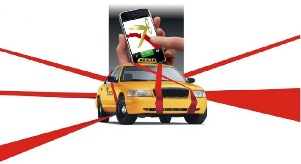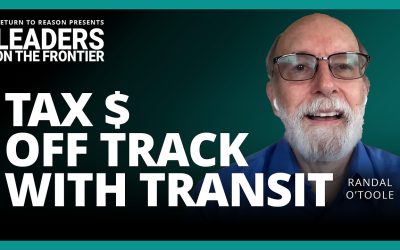INTRODUCTION
 Across Canada, the taxi industry remains the most regulated industry outside of supply managed poultry and dairy products. Almost every major municipality regulates the quality of taxi services and the number of cabs operating in its jurisdiction as well as the fares that drivers are able to charge.
Across Canada, the taxi industry remains the most regulated industry outside of supply managed poultry and dairy products. Almost every major municipality regulates the quality of taxi services and the number of cabs operating in its jurisdiction as well as the fares that drivers are able to charge. This regulatory approach has created absurdities. Powerful lobby groups have sprung up to protect incumbent operators from newcomers who would like to enter the market as competitors. Calgary, for example, has had the same number of regular cabs since 1986 despite the city’s workforce having doubled since then. Winnipeg has had the same number of cabs since World War ll. This protection from competition is worth a lot of money to incumbents. The price of a taxi plate, essentially a piece of paper that allows a driver to operate in a city, has gotten as high as $500,000 in Vancouver and is over $100,000 in most cities for which data is available.1 Econometric analysis shows that when regulators increase fares, the increased revenue is simply captured by plate holders and plate values rise in relation to fare increases.2 In short, municipalities across Canada have a taxi regulation regime that favours plate holders at the expense of consumers and would-be drivers.
The same people who benefit from this regime have argued on various occasions that the restrictions are necessary, because a deregulated market would be worse for consumers and drivers. They argue that a deregulated market would create an oversupply of cabs, thus reducing quality and increasing fare rates as too many cabs chase too few fares. They argue that because consumers often do not know what kind of cab they are getting into, it is important for regulators to set a standard price and service level. They also argue that if drivers were not required to belong to a brokerage with a telephone-dispatch service, sufficient dispatch services would no longer be funded, as drivers seek to avoid the cost of a dispatch fees and instead pursue fares by queuing at ranks and cruising the streets for “hail” fares. In other words, they argue that any benefits regulation delivers to incumbents are smaller than what market failures would cost consumers.
Over the past two years, the Frontier Centre has argued that concerns over market failures are overstated.3 We have argued that the market failures to which the proponents of regulation point simply have not emerged in countries that have deregulated. New Zealand and Ireland are examples. We have argued, in the words of one New Zealand economist who studied the deregulation experience in his country, that
…deregulation (the removal of quantity and price controls) with appropriate (re)introduction of quality standards can bring about a restructuring of the industry in a way that benefits both consumers and suppliers alike. Far from being an industry apart, ungovernable without stringent regulation, the removal of entry and fare restrictions has released forces which have led to a new and considerably more vibrant local taxi industry.4
The Organisation for Economic Cooperation and Development (OECD), which concluded a study of 17 countries’ experiences of deregulation, has echoed this finding.
Increasing numbers of OECD countries have removed or loosened supply restrictions on taxis. The results of these reforms have been strongly positive, with reduced waiting times, increased consumer satisfaction and, in many cases, falling prices being observed.5
A meta study of 28 studies of taxi regulation by professional economists found that 19 favoured deregulation, two were equivocal and the remaining seven supported regulation.6
Despite this weight of evidence, city halls across the country have been unwilling to seriously question why they are trying to regulate the number of cabs and the fares that drivers can charge. For example, the Frontier Centre gained considerable media coverage including news articles, newspaper op-eds and radio and television interviews when it made the case for taxi deregulation in Calgary, Regina, Saskatoon and Winnipeg in 2009. Regina, Saskatoon and Winnipeg commissioned outside studies into taxi regulation in the past two years, yet the results avoided the question of deregulation. The two Saskatchewan cities commissioned a report from a consultant in 2009. Earlier that year, he delivered a report that was prima facie dismissive of deregulation for Winnipeg. Predictably, he wrote almost identical reports for his Saskatchewan clients.7
The reason for the entrenchment of regulation is easy to see. The Calgary report explained that while deregulation might be desirable, it was not acceptable to open up competition, because it would reduce the value of taxi plates. “[Deregulation] would reduce or eliminate plate values, with significant disruption to current stakeholders in the industry.
Owner-drivers would see their incomes fall and a cherished asset disappear in value.”8 Calgary taxi plates trade for approximately $150,000 each, and they can be rented to drivers for approximately $200 per week. Collectively, the 1,411 Calgary plates, half of which are owned by fewer than five individuals, are a $200- million plus asset that brings in weekly revenues of approximately $300,000 to their current holders. With so much to lose, incumbent holders in Calgary have hired powerful lobbyists such as Wayne Bill Communications to plead their case in the public sphere and elsewhere.9
The current debate is deadlocked. On one side is the weight of academic and practical evidence in favour of taxi deregulation. On the other are those who would lose millions of dollars if their protection from competition were removed. They will do almost anything to safeguard their interests.
This paper, however, describes an imminent technological disruption to the industry that no one has the power to stop. It argues that the coming ubiquity of GPS-enabled smartphones will change the debate in two ways. In the first place, such phones will remove any remaining uncertainty over whether current taxi regulations are desirable. Secondly, they will make it much more difficult for the authorities to police who is offering paid rides in cars. In effect, the industry faces de facto deregulation regardless of what the authorities choose to do.
View entire study as PDF (18 Pages)
 Across Canada, the taxi industry remains the most regulated industry outside of supply managed poultry and dairy products. Almost every major municipality regulates the quality of taxi services and the number of cabs operating in its jurisdiction as well as the fares that drivers are able to charge.
Across Canada, the taxi industry remains the most regulated industry outside of supply managed poultry and dairy products. Almost every major municipality regulates the quality of taxi services and the number of cabs operating in its jurisdiction as well as the fares that drivers are able to charge. 

